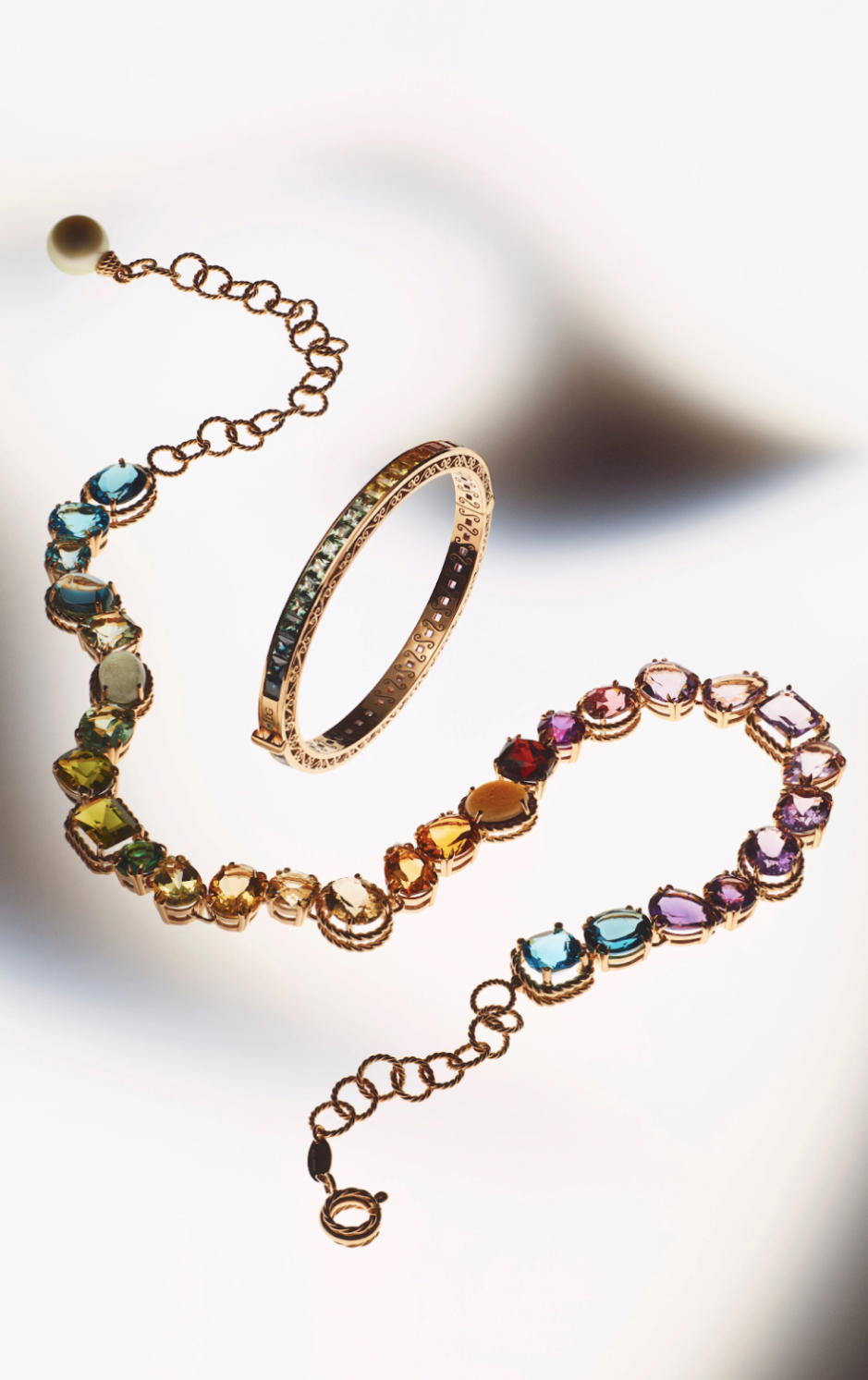High Fashion’s Artificial Rainbows
Graphic by Ruth Ellen Berry.
It’s June. Beaches are full. Windows are down. Tans are forming. And suddenly, every store in sight is bursting with color. Pride flags hang down banisters, rainbow logos populate social media pages, rainbow soles peek out of shoes. But when Pride Month ends, so do the rainbows.
Image courtesy of Converse.
Rainbow washing — profiting off of LGBTQ+ culture, especially queer Black culture, without actually integrating allyship — is a common and rampant trend among brands in the fashion industry. Jumping to cash in on the coveted pink dollar of the LGBTQ+ community (who, according to Forbes, had a buying power of $3.7 trillion in 2019), brands bust out shiny Pride campaigns every June. Despite vows to donate proceeds and pandering pledges to increase diversity, this commitment is often opportunistic and/or unfulfilled. Queer culture is celebrated when convenient and recognized when profitable. Earnings rarely ever go to the LGBTQ+ community, and the same faces that get fervently pushed to the forefront in June get buried under the shuffle of commercial imagery and strategic branding the rest of the year.
While this rainbow washing is increasingly noticeable in commercial brands such as Levis and Converse, its wave doesn’t quell there. High fashion, namely beloved designer houses and couture brands, face a much more subtle but equally harmful manifestation of rainbow washing. The high fashion industry has often been viewed as an LGBTQ+ industry: one of the first places where queer men were accepted in the workforce. Fashion is assumed to go hand-in-hand with queer culture. And while queer culture, as a whole, heavily informs and influences the high fashion industry, the reality of representation is comparable to that of a rainbow sticker slapped onto a window.
Those at the forefront of high fashion are often white, cis men. According to Forbes, as of 2019, only around 14% of the 50 major fashion brands were run by women. And, according to the New York Times, there are currently no Black women at the head of any major Parisian luxury brand. Designs themselves are still locked into traditional methods of sizing and gendering. Femme, non-binary and BIPOC designers are spearheading trends and pioneering innovation, yet they remain in the shadows. Much of the queer community is unrecognized and unintegrated, despite the industry profiting off surface-level inclusivity.
Take the theme of the 2019 Met Gala: camp. Camp is a term coined by queer people, representing grand, outrageous and ironic displays of extravagance. Queer and trans people of color have been credited with pushing camp into the mainstream. However, most of the designers at the gala, if LGBTQ+, were older white men. As were most of the celebrities invited.
Just this year, Dolce & Gabbana released a rainbow jewelry collection, featuring colorful stones adorned with hefty price tags, just in time for Pride Month. However, Dolce & Gabanna has a documented condescending and problematic view toward the LGBTQ+ community, Domenico Dolce and Stefano Gabbana themselves making especially disparaging statements about children of same-sex relationships. As recent as 2021, Dolce & Gabbana used a Pride-centered marketing campaign solely as a strategy to recover from the blowback when a commercial negatively depicted a Chinese model.
Image courtesy of Dolce & Gabanna.
Though some brands are sincere in their allyship, this dedication is the exception. It is crucial that diversity and inclusion are not gaining momentum due to their commercial potential but because of their genuine necessity within brands. Inclusion is not a month-long marketing campaign. It is a lasting, year-round commitment; couture brands and high fashion houses are certainly not exempt from this. Though their rainbow washing is not nearly as overt as that of commercial brands, it is equally, if not more, insidious.



